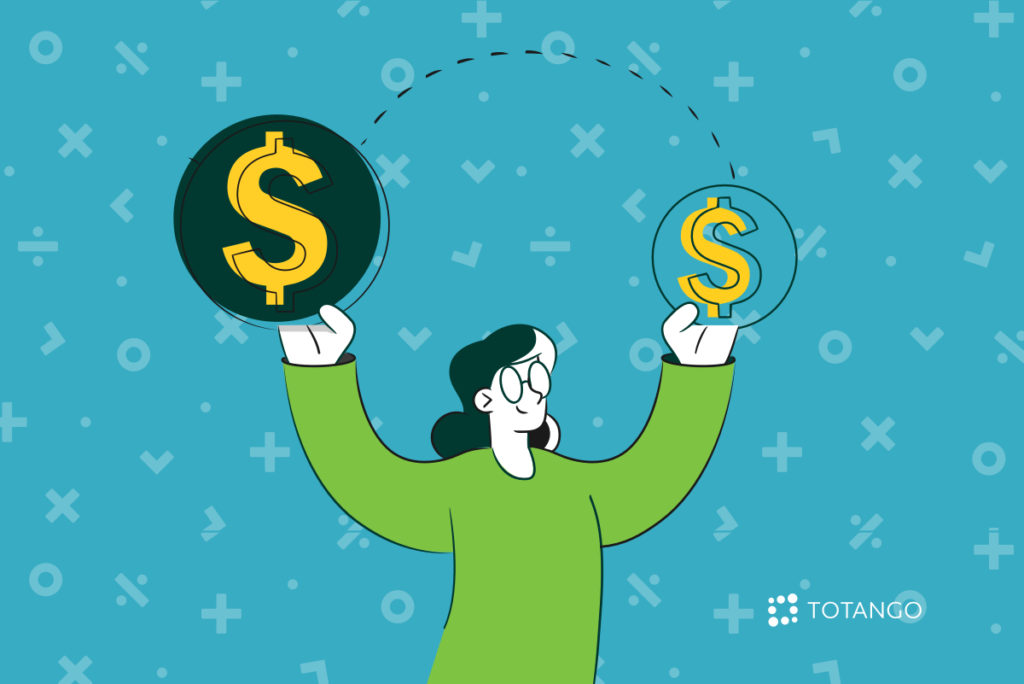Comparing the cost of customer retention versus customer acquisition underscores why retaining clients is so important. Here’s how to calculate both kinds of costs and why retention should form part of a profitable business strategy.
Calculating the Cost of Customer Acquisition
To compare the cost of customer retention versus customer acquisition, let’s start with average customer acquisition cost (CAC), which tends to be the more expensive of the two categories. To calculate your average CAC, total up all the marketing and sales costs that go into your acquisition efforts for a given period. Then divide by the number of customers acquired during that period. The result is your average CAC. CAC can also be calculated for individual customers.
The procedure for calculating CAC can be expressed through the formula:
CAC = Total marketing and sales costs for customer acquisition / Total number of customers acquired
For example, if your acquisition-related marketing and sales costs for the year added up to $200,000 and you acquired 1,000 new customers over the year, your average CAC for the year would be $200 per customer.
To break down the costs which go into this formula, consider everything which needs to happen in order to bring a customer successfully through your marketing and sales process to the point of transaction. Your expenses can include the costs of:
- Salaries, commissions and benefits for marketing and sales team members
- Developing marketing content for blogs, social media and video platforms
- Paid advertising for PPC, search engine marketing, social media and web retargeting
- Web design and maintenance
- Email marketing
- Text marketing
- Price comparison engines
- Customer support for sales transactions
When you add up all the factors which go into acquisition, the cost of customer acquisition quickly becomes expensive. In the B2B SaaS industry, the average CAC is $205 per customer using organic search and social media methods and $341 per customer using paid advertising, estimates SEO provider First Page Sage. In some industries, such as financial services, the cost of acquiring customers through paid advertising can exceed $1,000 per customer.
Calculating the Cost of Customer Retention
Customer retention cost (CRC) can be calculated by adding up all the costs required to retain customers over a given period and dividing by the number of customers retained during that period. These costs can be averaged over your entire customer base or calculated per customer.
The procedure for calculating CRC can be expressed through the formula:
CRC = Total costs for customer retention / Total number of customers retained
For example, if total customer retention costs for the year added up to $200,000 and you retained 5,000 customers, your average CRC for the year would be $40 per customer.
Retention costs break down into a few general areas of expenditures:
- Customer success efforts to help customers set and achieve goals
- Account management and renewal costs
- Customer engagement and adoption systems and programs
- Professional services and training
- Customer marketing to promote renewals cross-sells and upsells
- Discounts that reduce the price of sales to repeat buyers
- Opportunity costs for time spent on retaining current customers instead of acquiring new customers or selling to other clients
These costs will vary by industry. In general, the biggest expense category is usually staffing costs for paying salaries of customer success managers (CSMs) and other customer success team members, so you may find it useful to monitor your revenue per CSM. Customer success technology and programs constitute other major expenses. Altogether, as a rule of thumb, CRC costs average three to six times less than CAC costs.
The Strategic Importance of Customer Retention
The higher cost of customer acquisition makes it strategic to place a high priority on customer retention. Acquiring customers is crucial for initial sales, but after a customer has been acquired, retaining them for repeat business is much more cost-efficient than losing their business and trying to acquire another new customer to replace them. An effective customer retention strategy multiplying the return on your acquisition investments.
The most efficient way to increase your customer retention rate is to implement a data-driven customer success program. Relying on data collected from all points where you interact with your customers provides you with invaluable insights into why some customers stay with you and others leave. This allows you to make adjustments and improvements to multiply your retention rates and revenue. A recent survey by market research firm Aberdeen found that firms with data-driven customer success programs enjoy 93% greater improvements in customer retention rates than other firms. Coupled with other data-driven strategies, this translates into 40% greater year-over-year annual revenue, the survey showed.
Focus on Retention to Increase Your Profit Margin
Comparing the cost of customer retention versus customer acquisition underscores why retention is so critical for profitability. While acquiring customers is a necessary expense, it tends to cost three to six times more than retaining customers. This makes it much more cost-efficient to prioritize customer retention than to focus on acquisition at the expense of high attrition. To maximize your profits, strive for a healthy balance of effective acquisition campaigns and efficient retention strategies.
Totango’s Spark platform provides tools to optimize your customer retention strategy, such as the Ensure Customer Renewal SuccessBLOC, which automates best practices and processes to promote renewal of customer subscriptions. Try it free to experience today’s cutting-edge customer success tool for yourself.

